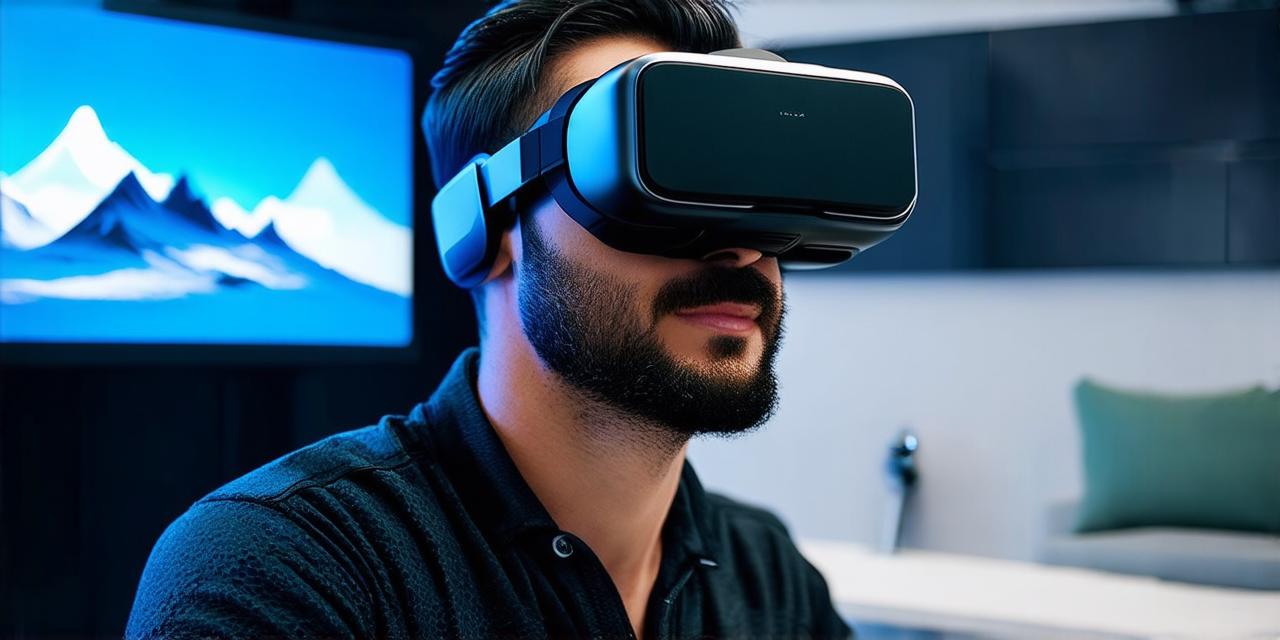<!DOCTYPE html>
Benefits of Virtual Reality with Oculus
Virtual reality (VR) technology has been advancing rapidly in recent years, and it’s becoming increasingly popular among individuals, businesses, and even entire industries. One of the most popular VR platforms available today is Oculus, which offers a wide range of VR devices and applications.
1. Improved Training and Education
Virtual reality has already proven to be a valuable tool for training and education, but with Oculus, the possibilities are even greater. By using VR simulations, students can experience real-life scenarios in a safe environment, allowing them to learn and practice new skills without the risk of injury or damage to equipment.
2. Enhanced Customer Experience
Virtual reality can be used to create immersive customer experiences that are impossible to replicate in real life. With Oculus, businesses can offer customers virtual tours of their products or services, allowing them to explore and interact with the product before making a purchase decision.
3. Increased Creativity and Innovation
Virtual reality allows developers to create and explore new and innovative ideas in ways that were previously impossible. With Oculus, developers can use VR technology to create interactive installations, immersive art exhibits, and even virtual reality games.
4. Improved Collaboration and Communication
Virtual reality can be used to facilitate better collaboration and communication among team members working on a project. With Oculus, team members can use VR technology to communicate in real-time, allowing them to see and interact with each other as if they were in the same physical space.
5. Reduced Costs and Increased Efficiency
Virtual reality can be used to reduce costs and increase efficiency in a variety of industries. For example, architects can use VR simulations to visualize and test designs before construction begins, reducing the need for physical models and saving time and money.
Real-Life Examples of Virtual Reality with Oculus
1. Medical Training: The University of California San Francisco (UCSF) uses VR technology provided by Oculus to train medical students in surgical procedures. By using VR simulations, medical students can practice surgeries in a safe environment, allowing them to learn and improve their skills without the risk of injury or damage to equipment.
2. Automotive Industry: Ford Motor Company uses Oculus technology to design and test new car models. With VR simulations, engineers can visualize and test designs before production begins, reducing the need for physical prototypes and saving time and money.
3. Education: The National Geographic Society has partnered with Oculus to create virtual reality experiences that transport students to distant locations around the world. These experiences allow students to explore and learn about different cultures, environments, and historical events in an immersive way.
4. Gaming: Video game developers are using VR technology with Oculus to create more realistic and engaging gaming experiences for players. For example, the popular game “Beat Saber” has a virtual reality version that allows players to experience the game as if they were actually in the music video.
5. Real Estate: Virtual reality can be used in real estate to give potential buyers a virtual tour of properties they are interested in. This can save time and money for both buyers and sellers, and allow buyers to get a better sense of the property without physically being there.
FAQs
Q: What is virtual reality?
Virtual reality is a computer-generated simulation that allows users to experience a different reality or environment in a way that feels real. It typically involves wearing a headset or other device that tracks the user’s movement and provides them with a 360-degree view of a virtual world.
Q: How does virtual reality work with Oculus?
Virtual reality with Oculus works by using sensors and cameras to track the movement of the user’s head and body, allowing them to interact with virtual objects and environments in real-time. The VR headset provides a 360-degree view of a virtual world, while handheld controllers allow users to interact with virtual objects.
Q: What are some common applications of virtual reality with Oculus?
Some common applications of virtual reality with Oculus include training and education, customer experience, creativity and innovation, collaboration and communication, and reduced costs and increased efficiency. Virtual reality can also be used in gaming, entertainment, real estate, and other industries.
Summary
Virtual reality technology is becoming increasingly popular among individuals, businesses, and entire industries. With the help of Oculus, developers can take advantage of the many benefits that virtual reality has to offer, including improved training and education, enhanced customer experience, increased creativity and innovation, improved collaboration and communication, and reduced costs and increased efficiency. By using virtual reality with Oculus, developers can create immersive experiences that are impossible to replicate in real life, and help drive innovation and growth in a variety of industries. As the world continues to evolve and embrace new technologies, virtual reality is sure to play an increasingly important role in shaping our future.
